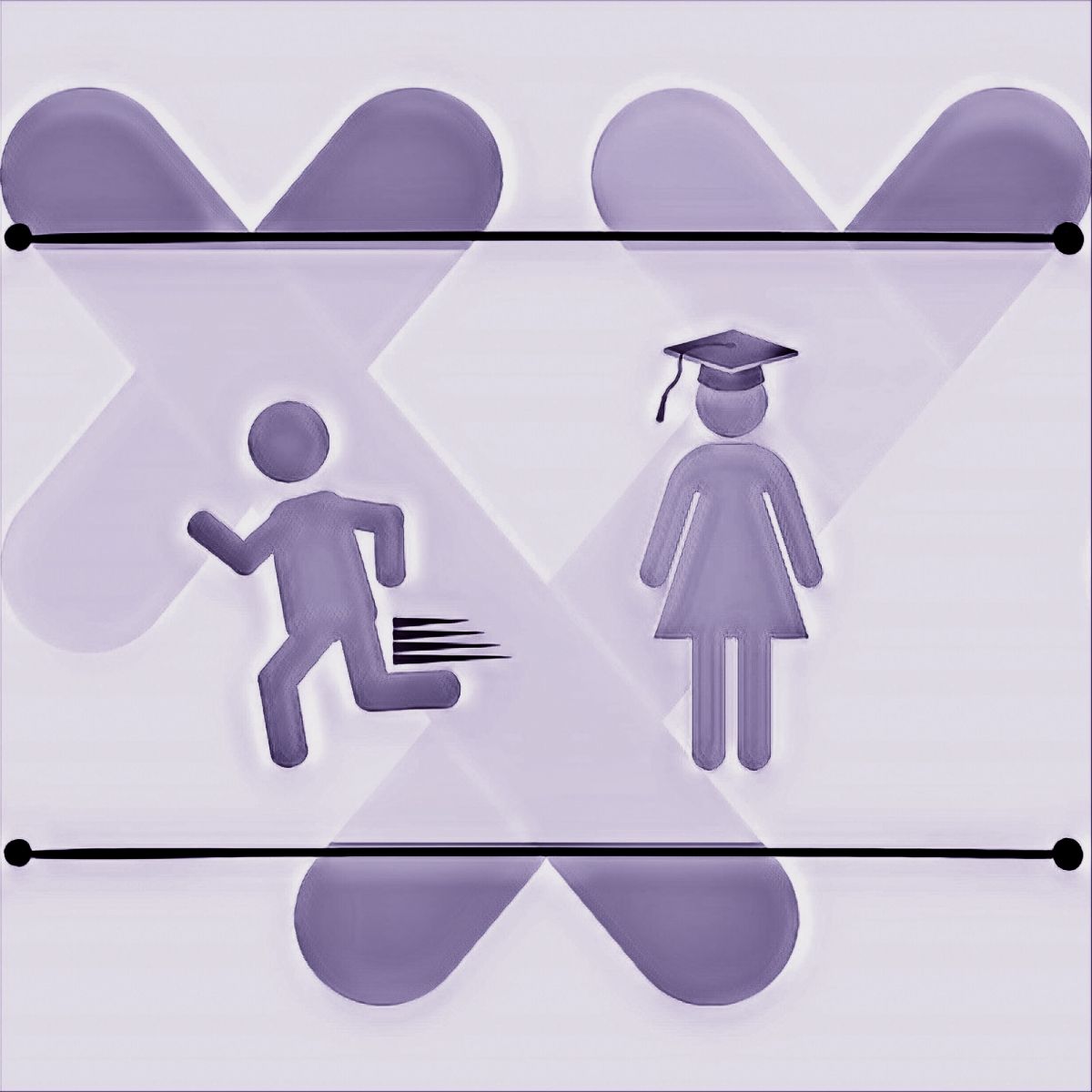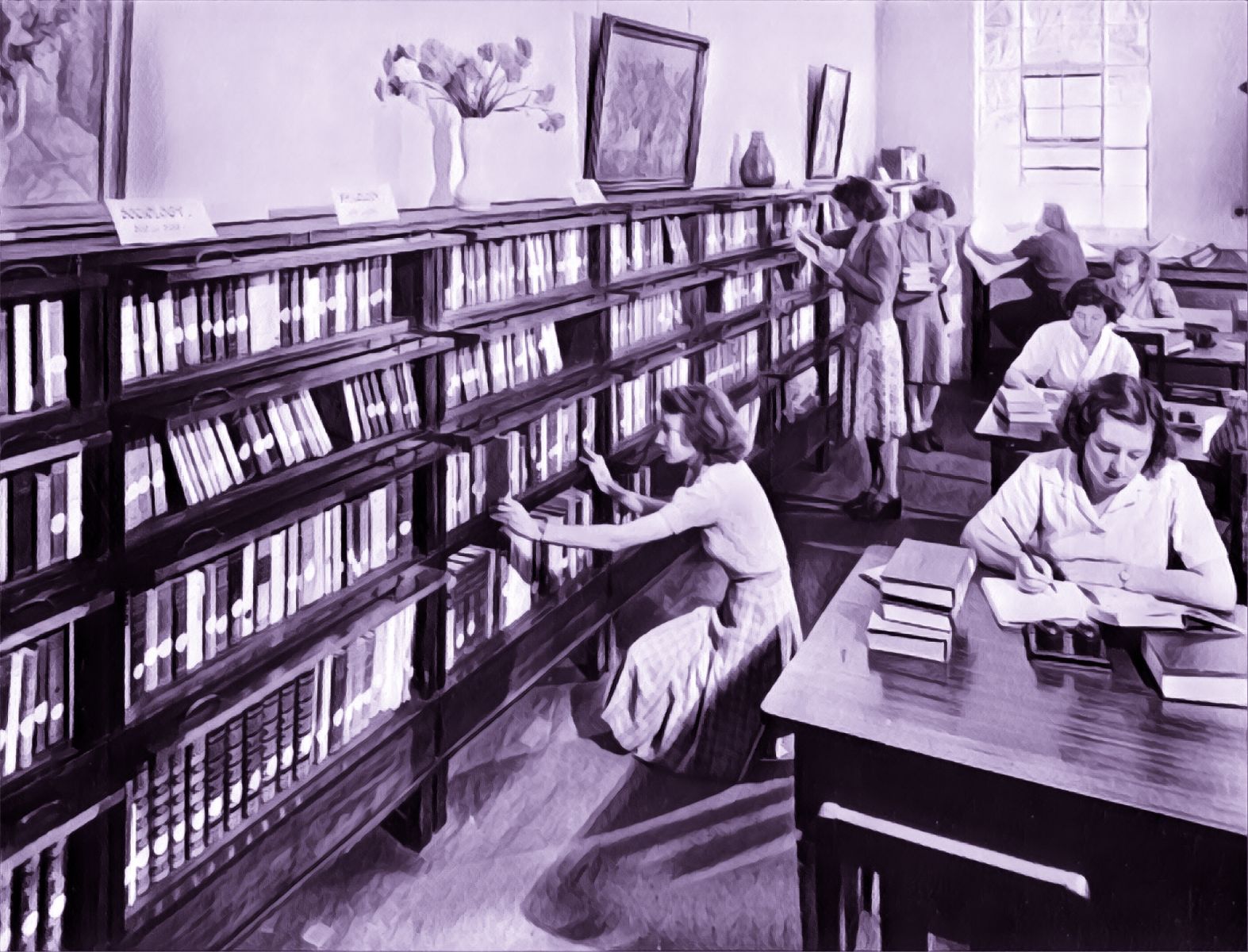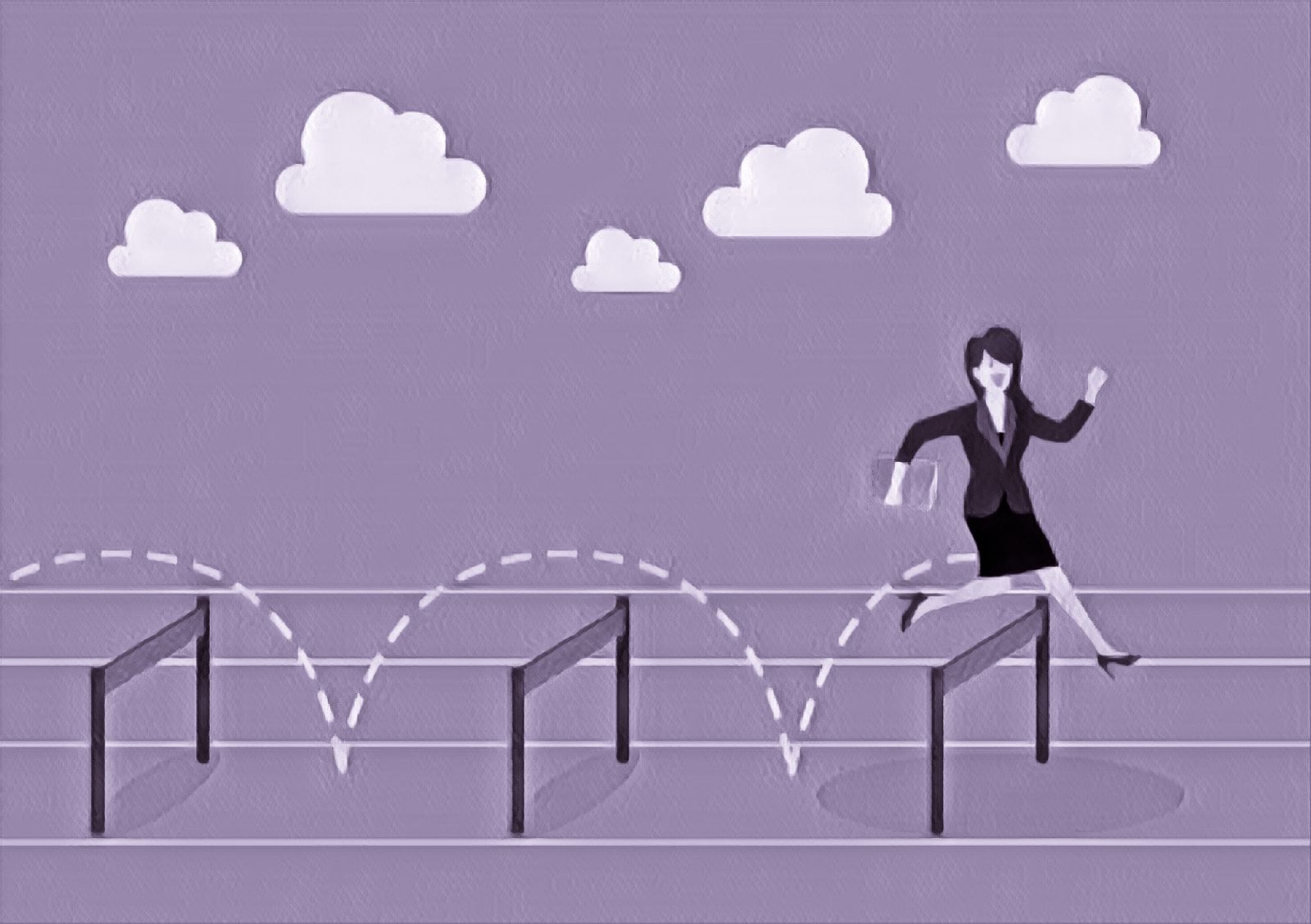LEFTOVERS AT THE MARRIAGE MARKET: Finding a New Equilibrium for Marriage
SK-II and the new face of singlehood
It’s feeding hour at the marriage market in People’s Park, Shanghai, and the parkways are choked with traffic. Marriage profiles bloom across the open faces of umbrellas, dispensing information about the age, income, and education of their candidates. Although said candidates are absent from the scene, their profiles often tell their story in three key statistics: female, over 27, and educated.
This image of a concrete, physical marriage market, captured in a 2016 campaign by SK-II, a Japanese skincare company, articulates the plight of an increasingly prominent group of well-educated, urban women in China. SK-II’s promotional video centers on a particularly modern peculiarity: while rising female education has augmented women’s participation in the workforce (in 2017, Chinese women contributed to 41% of the country’s GDP [1]), their power in the marriage market seems to have diminished dramatically. The term “leftover women,” or sheng nu, is used to describe the women in SK-II’s campaign, who remain unmarried despite higher education and stable employment. Despite their thriving careers, these women are, it appears, undesirable matches.

While the particular label of being a leftover woman is new, the social anxieties about unmarried, highly-educated women are anything but, considering our cultural lexicon of “old maids,” “spinsters,” and, more recently, “cat ladies.” And these anxieties are far from a uniquely Chinese phenomenon. An excess of college-educated women compared to college-educated men in the US and Europe, for example, has inspired considerable handwringing for policymakers and analysts alike. As far as media narratives go, the specter of the problematic graduate woman has become standard fare in explaining the decline in marriage rates among well-educated women. In “A Good Man is Getting Even Harder to Find,” a 2017 article for the Wall Street Journal, Gerard Baker reacts against the gender imbalance in college education in America: in 2018, women made up 57% and 59% of Bachelor’s and Master’s degree recipients. This imbalance, in his view, will leave highly-educated women with little choice but to compromise on their criteria for an ideal partner:
But every year, the pool of eligible male graduates is getting smaller relative to the number of women. Now of course college isn’t everything, and many women will find a perfect mate who hasn’t been through the four-year playground of parties, sleeping and the occasional lecture. But the reality is that more of them are going to have to if they want a meaningful relationship [2].
To Baker, increasing levels of female education ironically lead to less empowerment in the sphere of marriage. He points out that women are much pickier than men in finding a partner—drawing on data from dating apps to make his case—making it even harder for them to find a suitable partner. In other words, there exists an oversupply of well-educated women, who supposedly prefer to marry someone of a roughly equivalent level of educational attainment. His suggestion, then, is that well-educated women will either have to make significant compromises in the hunt for a husband, or settle for singlehood.
At first glance, such misgivings about the prospect of marriage and childbirth amongst highly-educated women seem well-placed. The most common assumptions about educated women’s preferences for childbirth and marriage today are that they are less inclined to marry and have children, and that they prefer to “marry up.” But it is not enough to focus only on these so-called preferences of educated women if we want to tackle the issue of marriage and birth rates. While attitudes may prefigure behavior, they also interact crucially with external circumstances. We must therefore consider both questions: how much have educated women’s preferences for marriage and childbirth changed, and how much do these changing attitudes influence observed behavior? Drawing from research on women’s childbirth preferences versus actual fertility rate, I argue that there exists a gap between women’s aspirations and the realization of these desires. In other words, attitudes and actualization are two distinct matters, separated by a world of social conditions, state policies, and other agencies.
Drawing from research on women’s childbirth preferences versus actual fertility rate, I argue that…attitudes and actualization are two distinct matters, separated by a world of social conditions, state policies, and other agencies.
More broadly, the problem with arguments like Baker’s is that they frame wider shifts in marriage and childbirth as the responsibility of a single group in society. Educated women are seen both as the cause of decreasing rates of marriage and as compromisers who must marry down, marry earlier, remain single, or otherwise temper their expectations about their prospects. Current research, however, points to the intuitive yet overlooked imperative to look beyond the impact of women’s attitudes and women’s behavior on marriage, and to consider how other groups—not least educated or uneducated men—may also affect marriage trends [2].
Changing tastes
A frequent explanation for the heavy penalties that educated women face in the marriage market rests on assumptions that they prefer to marry “up” (i.e., someone of an equal or higher education level), while men are indifferent or prefer to marry “down” (i.e., someone of an equal or lower education level). The problem arises when there are more educated women than are there educated men; since the 90s [3], the number of American women between 25–29 years of age with a Bachelor’s degree or higher has outstripped that of men. This, it is argued, results in a shortage in the pool of prospective partners for educated women. Further complications are other factors that make it more expensive for educated women to marry: because they hold higher-paying jobs, they face a higher opportunity cost in leaving or taking a break from the workforce to tend to their families.

Given the significant trade-off that educated women often have to make in choosing to get married to have children, it may seem reasonable to conclude that they will naturally have higher standards for their partners. Yet there is no evidence that the low marriage rates for well-educated women can be explained by female choosiness and overly-exacting standards. Gerard Baker, in his article for the Wall Street Journal, cites data from the dating app Hinge to support his argument that women are more selective about their partners. According to the data, “attractive” traits are more unequally distributed among men than among women: only a small group of men are considered attractive partners, while a far larger group of women are considered attractive. However, these findings in themselves do not tell a clear story of how “attractiveness” translates into marriage formation. That fewer men than women are considered “attractive” does not necessarily mean that women are pickier than men in choosing a partner. Nor can we conclude anything about women’s preferences for the educational attainment of their spouses, not least because Baker never specifies these “attractive” traits. Dating apps facilitate a variety of relationships with varying levels of commitment. Without contextualizing these relationships and their associated assets, it is not clear that “pickiness” on a dating app suggests also that women prefer to marry someone of a higher educational attainment.
Research into educational inequalities between partnerships suggest that women marrying ‘up’ has become far less common than assumed.
Research into educational inequalities between actual partnerships in fact suggest that women marrying “up” has become far less common than assumed. The conventional wisdom that men marry “down” while women marry “up” held true between the 1920s and 1950s, when college education for women was a rarity rather than a right. Nonetheless, most of the marriages comprised partners with the same level of education, which represented 50% of partnerships in 1920s France, for example. Couples where men were more educated made up the minority of marriages—casting doubt on the assumption that women prioritized marrying “up,” or that such was the norm for marriage. It may be contended that, during the 1920s, college education placed a greater handicap on women in the marriage market, due perhaps to the more patriarchal norms and ideals of French society at that time. This trend, however, had begun to reverse by 1955. By the early 1970s, the proportion of couples in which the woman was more educated than the man was the same as the proportion of couples that had the same level of educational attainment (40%). By contrast, couples where women married men with higher educational attainment made up only 20% of the population. These shifts coincided with the greater emphasis on equality between the sexes in postwar France, evinced by increasing educational and economic opportunities for women in postwar France [4].
This analysis of partnerships in postwar France suggests that conventional wisdom about the tendency to marry “up” or “down” may be overemphasized, given that the majority of matches by the 1970s have tended to be been between equally educated partners. The data, which extends until the 1970s, suggests that marrying “up” is far less common than assumed, with more women marrying “down” than “up.” In fact, the rate at which women are marrying “down” outstrips the number of such marriages predicted by the gap in educational attainment between men and women. Since decreases in the available pool of equally educated candidates are insufficient for explaining the increased prevalence of educationally “unequal” marriages, we cannot assume that women are marrying “down” simply out of necessity. Rather, the importance women place on a spouse’s education level may have relaxed over time, thus challenging the assumption that highly-educated women today are still limited by a preference for spouses of equal or higher education. As the analysis of marriage and education shifts in postwar France shows, though marrying “up” was more common than marrying “down” before the 1950s, such patterns became much less prevalent by the 1970s, suggesting that supposedly “fixed” attitudes about marriage preference can undergo changes over time. Norms and preferences are not universal laws of behavior; instead, they are continually reshaped in step with changing social realities. Analysts who hope to understand marriage preferences, then, may need to cast their nets beyond outdated metrics, such as considerations of educational attainment.
…the importance women place on a spouse’s education level may have relaxed over time, thus challenging the assumption that highly educated women today are still limited by a preference for spouses of equal or higher education.
Aspirations versus outcomes
New norms for marrying “up” or “down” show that attitudes and preferences about marriage can and do evolve with time. However, attitudes do not perfectly predict behavior, and it is necessary to understand how these attitudes interact with external situations. For example, all of the so-called “leftover women” interviewed for SK-II’s campaign maintain that they want to get married, but have not found the right match, pointing to a disparity between aspirations and realization. Current research often focuses on the observed outcomes of increasing educational attainment among women, arguing that these numbers suggest an increase in the number of women who prefer to remain single. This perspective maintains that increasing economic independence secured through education allows women to avoid marriage and childbearing, activities that are the result of women’s economic dependence on men. A similar line of argument contends that contemporary values, which focus on personal fulfilment, go against the sacrifice and care required of parents. While these analyses provide plausible explanations for current trends, they tend to frame marriage and birth rates as unilateral and ideological decisions undertaken by women, overlooking possible mismatches between aspirations and realized outcomes.
Thus, to properly understand decreasing marriage rates and, by extension, birth rates among women, it is important to separate attitudes from outcomes. Low rates of childbirth may not necessarily mean that women do not want to have children, or that they prefer smaller families. In fact, a 2015 study of educational differences and fertility rates suggests that low birth rates are not reflective of women’s desire to remain childless, but arise in spite of their desire for more children. The study uses a Traits-Desires-Intentions-Behavior model of fertility across the lifetime of its survey subjects to track the changing fertility desires of 17,000 UK participants born in 1958. The model assumes that motivations are innate psychological traits or dispositions in an individual, which affect the number of children they desire. These traits and desires, however, differ from one’s intentions, which are concrete, pragmatic plans that arise after evaluating one’s situation and limitations. These intentions result in behaviors, which are observable actions and outcomes. Put simply, the study maps the ways in which women’s ideal number of children differs from their planned and actual number of children [4], highlighting how desires are revised, tempered, and achieved (or otherwise unachieved) across time [5].

While this study affirms existing observations that increased academic achievement in women is associated with lower fertility levels and higher levels of singlehood, it additionally highlights that these highly-educated women do not necessarily prefer a smaller family size. These preferences, when surveyed at age 16, are more closely correlated with an individual’s family background rather than her educational level, and do not necessarily demonstrate that educated women prioritize their career aspirations over their hopes for children. Even when surveyed at later ages (at ages 23 and 46, specifically), few highly-educated women intended to remain childless and were just as likely as less-educated women to desire large families—in fact, 30% of highly-educated women desired families with at least three children. Even among highly-educated women who indicated their desire for fewer children, when polled at age 23, the vast majority (92.6%) intended to have at least one child, with most intending to have two children and a minority intending to have just one child. As far as plans for the future go, these figures suggest that most highly-educated women are not against childbirth or family life. In fact, the distribution of their fertility intentions largely mirrors that of their less-educated peers: 48.8% of women without any qualifications intended to have two children, while 20.7% intended to have three children. Thus, their fertility intentions appear to be fairly consistent with that of other women, which contradicts the argument that highly-educated women are an anomalous, ideologically-divergent group that has a marked preference for remaining childless.

The question, then, is whether highly-educated women can actualize their intended goals. Indeed, it is in achieved fertility rates, rather than fertility desires, that a significant difference between highly-educated and less-educated women emerges. The mean achieved family size per woman for the 1955 cohort was found to be 2.14 births for less-educated women, and 1.65 births for women with no degree education. On the other hand, a quarter of educated women remained childless at age 46, despite only 6.2% of them having intended not to have children at age 23. This disparity between intended and achieved family sizes points to external constraints, as opposed to a group-specific set of internal priorities, as the limiting factor for the number of children that highly-educated women actually have. Whether these external constraints are circumstantial, systemic, or both, it is clear that they ultimately hinder highly-educated women from realizing their intentions. Exactly what these factors are requires further requires further research, though we may find plausible explanations in the difficulty that women face in sustaining a career and a family, as well as the postponement effect that university education has on marriage [6].
The mismatch between intentions and realizations invites us to consider how social realities affect women’s decisions to marry and have children.
The mismatch between intentions and realizations invites us to consider how social realities affect women’s decisions to marry and have children. This is not to deny the agency of educated women, but to argue that observed marriage and birth rates are molded not just by individual preferences and aspirations, but also by corporate, cultural, and educational structures. The final, achieved family sizes observed within the study, therefore, are reflections of how women prioritized childbirth in response to social structures. Although the results particular study cannot be applied to all societies, and reflects the priorities of a 1958 cohort of women [5], its results nonetheless highlight how childbirth rates are constrained by external factors. It encourages us to separate behavior from aspiration and constraint from choice. By understanding birth rates as responses to external factors, we can develop policies to support and help realize women’s aspirations for marriage and childbirth.
Beyond women’s issues: marriage
When we characterize “educated women” as self-obsessed and willful holdouts against national family and growth policies, we not only oversimplify their actual attitudes and goals, but we also overlook the ways in which other actors shape marriage and child-bearing decisions.

For an example of the agents that are being excluded from such one-sided approaches of understanding decreasing marriage and birth rates, we need only to return to the Shanghai marriage market. Profiles for the “leftover women” are posted alongside personals for “bare branches,” their male compatriots who are, conversely, often unskilled and uneducated. These “bare branches” represent a surfeit of uneducated men, a number that has been exacerbated by the male bias resulting from China’s one-child policy, who are likewise struggling to find partners in the market. These groups represent equally important actors that may reshape norms for marriage. In post-war France, for example, the increase in singlehood among uneducated men suggests that there is a new educational hierarchy among men in which the chances of marrying increase with their education level. Indeed, research suggests that rates of marriage have become lowest among uneducated men and women, while the proportion of singles among educated women have remained fairly stable [7]. Further, as college degrees are becoming prerequisites for most jobs, the “overeducation” that is often attributed to women may not be the problem. Outside a matchmaking context, men also have economic incentives to increase their investments in education.
When we characterize ‘educated women’ as self-obsessed and willful holdouts against national family and growth policies, we not only oversimplify their actual attitudes and goals, but we also overlook the ways in which other actors shape marriage and child-bearing decisions.
In fact, with university education becoming the standard rather than the exception among women—in Sweden, close to 60% of women between 30-34 years old had received university education in 2016 [7]—the term “educated women” may become too general to yield any analytical insight on marriage trends. More specific differentiators, such as field of study or starting wages, may be needed if we insist on focusing on “educated women” as an outlier group. Educated or not, it is also clear that we should not treat marriage as simply a women’s problem either. Doing so overlooks the other actors—not least the men, who are equal partners in these unions—that affect marriage and birth rates. Any attempt to solve or even understand the issues of marriage and fertility cannot focus on one group alone; as with any broad-based demographic change, its causes and solutions depend on a shifting balance between institutions, cultures, and actors. The issue, then, is not about women’s devaluation of marriage and indifference to family life, but about effective, insightful policymaking that understands and responds to these shifts and tensions.
Work Cited:
- “Chinese Women Contribute More To GDP Than Overseas Counterparts”. Yicai Global, 2020, https://www.yicaiglobal.com/news/chinese-women-contribute-more-gdp-overseas-counterparts.
- Baker, Gerard. “A Good Man Is Getting Even Harder To Find”. WSJ, 2020, https://www.wsj.com/articles/a-good-man-is-getting-even-harder-to-find-11570200829.
- Semuels, Alana. “Poor Girls Are Leaving Their Brothers Behind”. The Atlantic, 2020, https://www.theatlantic.com/business/archive/2017/11/gender-education-gap/546677/+&cd=1&hl=en&ct=clnk&gl=us.
- Bouchet-Valat, Milan, and Catriona Dutreuilh. “Fewer singles among highly educated women. A gender reversal of hypergamy across cohorts in France.” Population 70.4 (2015): 665-688.
- Berrington, Ann, and Serena Pattaro. “Educational differences in fertility desires, intentions and behaviour: A life course perspective.” Advances in life course research 21 (2014): 10-27.
- Cherlin, A. (1980). Postponing Marriage: The Influence of Young Women’s Work Expectations. Journal of Marriage and Family,42(2), 355-365. doi:10.2307/351233.
- Adserà, Alícia. “The future fertility of highly educated women: the role of educational composition shifts and labor market barriers.” Vienna Yearbook of Population Research 15 (2017): 19-25.